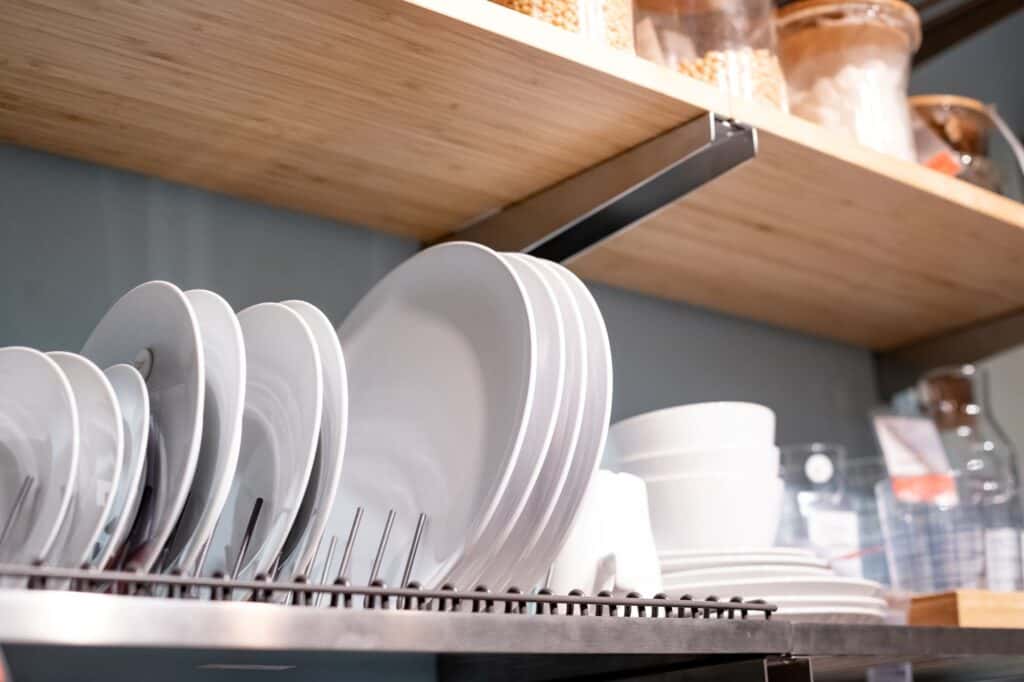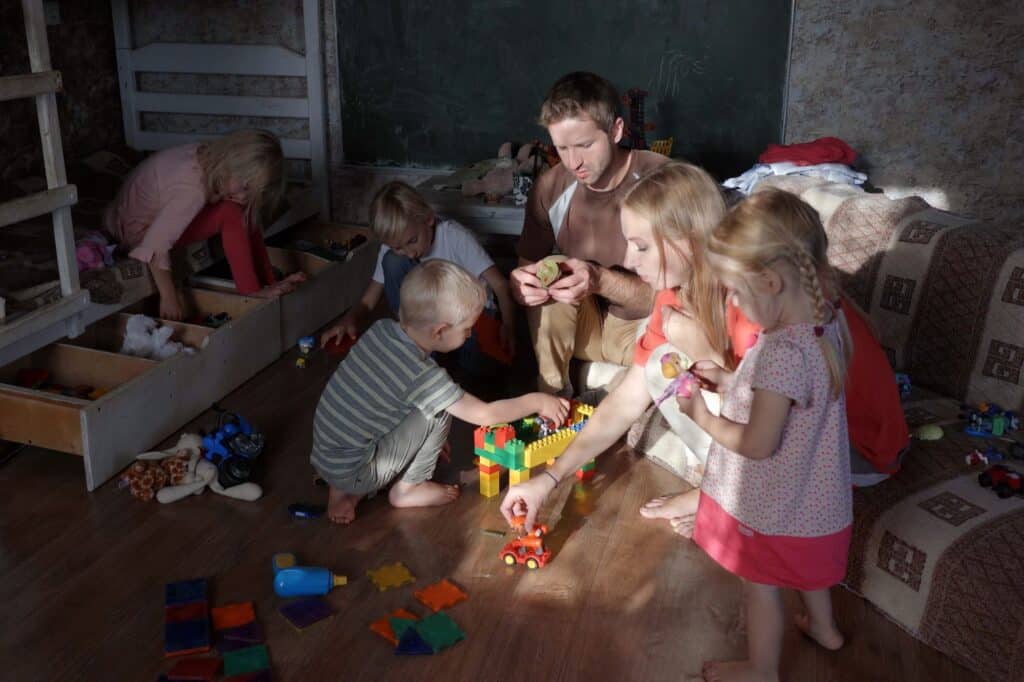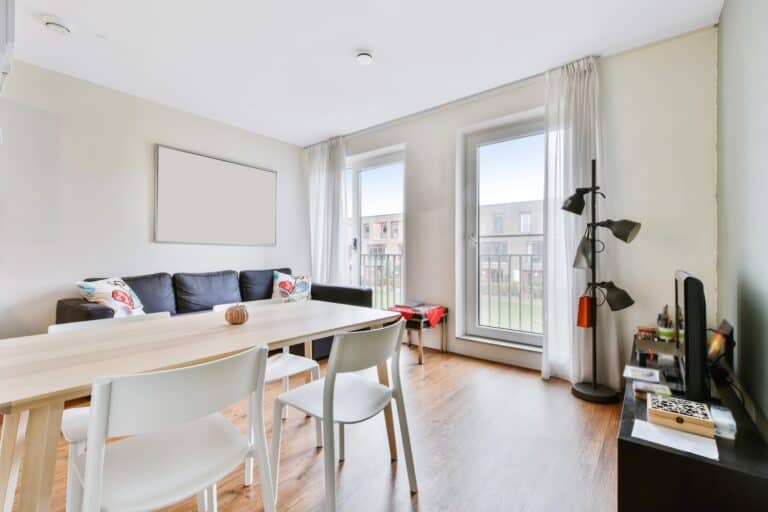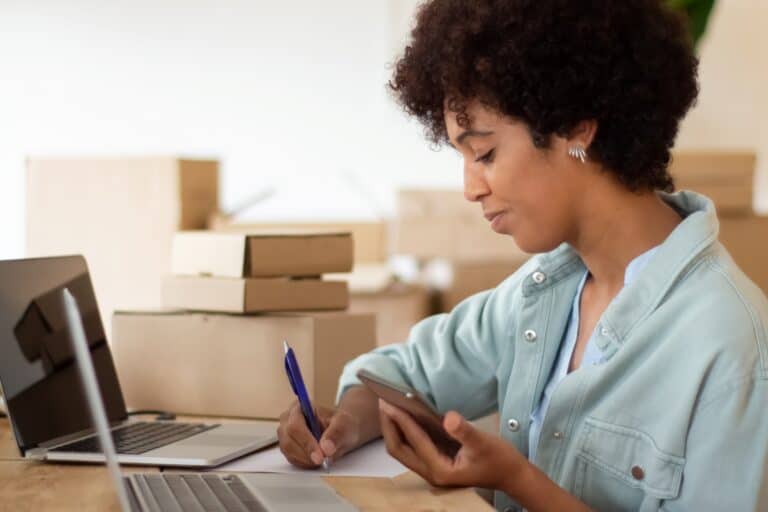Moving homes and need to pack and unpack efficiently? Our guide provides the know-how to streamline your pack and unpack for a home removal process. We cover everything from decisive decluttering to systematic unpacking, ensuring your journey to a new home is smooth and your belongings are handled with care. Start your move on the right foot with our expert advice.
Key Takeaways
- Decluttering before packing reduces moving costs, moving times, and environmental impact, and allows individuals to reassess their belongings, optimising the moving process and making packing more efficient.
- High-quality packing materials and smart use of household goods for packing can protect belongings and save space and money, while prioritising the packing of less-used rooms first facilitates an organised move.
- An ‘essentials box’ should be prepared for immediate use upon arrival, professional packing services offer tailored support, and post-move, excess packing materials should be donated, reused, or recycled responsibly.
Decluttering Before You Pack
The initial step in house move preparation in Islington involves decluttering your belongings, simplifying the packing process while decreasing moving costs and the time needed for packing and unpacking. By reducing the number of items requiring relocation, decluttering shortens moving times and lowers moving costs. It’s also an ideal occasion to discard or donate items that are outdated or no longer in use.
Decluttering before packing allows you to:
- Take stock of what you really need and what you can live without
- Lighten your physical load
- Provide a sense of mental clarity and organisation
- Set the stage for a smoother and more efficient move
This initial step is a liberating process that can greatly benefit your move.
The Art of Letting Go: Decluttering Strategies
Start the decluttering process early to allow for a more measured and less pressured approach. Breaking down the task into smaller, manageable areas can prevent feelings of being overwhelmed. For example, tackle one drawer or closet at a time, rather than trying to declutter an entire room in one go.
Bringing family members into the process enhances efficiency and manageability. Each person should take responsibility for their own belongings, reassessing items previously considered sentimental to make more rational decisions about whether to keep them. Such involvement not only expedites the process but also ensures everyone’s commitment to the move.
Lighten Your Load: Benefits of Decluttering
Decluttering your home before a move is highly recommended by movers as it:
- Reduces the cost of hiring a removal company
- Makes the packing process more organised and efficient
- Saves you time and effort when packing and unpacking
Additionally, rehoming decluttered items through donations, reselling, or recycling contributes to the sustainability of the moving process. By reducing waste and giving items a new life, you’re not only lightening your load but also making a positive environmental impact.
Assembling Your Packing Arsenal
After decluttering, begin assembling all the packing materials you’ll need. Essential packing materials include:
- Sturdy boxes in various sizes
- Packing tape
- Bubble wrap
- Packing paper
- Markers for labelling
These items will ensure that your belongings are carefully packed and safely packed, securely and can withstand the move.
In addition to traditional packing materials, consider using household items as alternatives. Clothes and linens can serve as cushioning for fragile items, saving on additional packing materials and space. Such practices not only cut costs but also optimise the use of items at hand.
Quality Packing Materials Checklist
Securing high-quality packing materials is imperative for the protection of your belongings during the move. Heavy-duty packaging materials, such as brown parcel tape and low-noise packing tape, are essential for securing boxes. Foam sheets and pouches provide additional protection for delicate items.
Strong, sturdy cardboard boxes with carry handles are specifically designed for moving and should have no give to prevent damage to items inside. For boxes containing fragile items, reinforce the bottoms with extra tape to provide added strength and protection. Taking this extra step can significantly enhance the safety of your belongings during transit.
Smart Packing Supplies Alternatives
Household linens, clothing, and towels can be excellent alternatives to traditional packing materials. For instance, use clothing to wrap fragile items or place towels at the bottom of boxes to add a layer of cushioning. Such strategies save money while optimally utilising available resources.
Strategically placing soft items at the bottom of boxes can help protect fragile items during transport. Additionally, wrapping delicate items in articles of clothing and securing them with tape can minimise shifting and potential damage. These smart alternatives can make your packing process both economical and efficient.
Room-by-Room Packing Strategies
Organising is vital for a successful move, and adopting a room-by-room packing method aids in achieving this. Here’s how to do it:
- Begin with rooms that are least used, such as guest rooms or storage areas.
- Move systematically towards areas of high activity, such as the kitchen or living room.
- Label each box with its contents and the destination room in the new home to streamline both packing and unpacking.
Maximise space within each box by packing heavier items at the bottom and lighter items on top. Ensure boxes are filled to prevent content shifting during the move. Prioritise the setup of essential spaces, like a home office, to ensure quick resumption of work or study activities with minimal interruption.
Systematic Approach to Packing Rooms
Start with less frequently used rooms such as guest rooms or storage areas to reduce the impact on daily life. Categorise items during the packing process to streamline both moving out and unpacking. This methodical approach ensures that everything has a place and can be easily found later.
Employ a detailed labelling system with a comprehensive inventory for each box. Clearly mark boxes that contain fragile items to ensure they are handled with care throughout the move. Such a system facilitates the packing process and simplifies unpacking.
Special Care for Fragile Items
Extra care is necessary while packing fragile items. Here are some steps to follow:
- Each item should be individually wrapped in bubble wrap to ensure their protection during the move.
- Line the bottom of the box with soft packing materials like bubble wrap or foam padding.
- Fill hollow objects with packing paper to mitigate vibrations.
By following these steps, you can ensure that your fragile items are well-protected during the move.

Pack heavier items at the bottom and use smaller boxes for fragile items to minimise movement and potential damage. For added protection, especially for items like glasses and stemware, use dividers to prevent shifting and collisions. Adhering to these precautions enhances the safe arrival of your delicate items.
Creating an ‘Essentials Box’
An essentials box is a container that holds everything you might need for the first few hours upon moving into your new home. The box is vital as it holds everyday items needed immediately upon arrival. Having an essentials box ensures a smoother transition into the new environment and reduces stress by providing immediate access to crucial items during the first days after the move.
What to Include in Your Essentials Box
The essentials box should contain items for the first night and morning, such as a change of clothes, toiletries, medications, sheets, and a pillow. Keep your essentials box within reach during the move, and have an additional bag for critical items such as important documents, chargers, and valuables.
Pack items that align with personal routines, like:
- toothbrush
- shower gel
- non-perishable food
- drinks
- snacks
- basic toolkit
- bottled water
For those moving with children, add items to keep them entertained, like toys or books. This box will be your lifeline during the first few hours in your new home.
Keeping Your Essentials Box Handy
Ensure the essentials box remains within reach during the move for instant access to needed items. It’s advisable to keep this box in the car with you during the move for the easiest access. If the essentials box cannot travel in the car, it should be the last box loaded onto the moving truck.
By loading the essentials box last onto the truck, it can be unloaded first at the destination to maintain its accessibility. This simple step ensures that your most important items are always within reach, alleviating stress during the move.
Professional Packing Services: When to Consider
Engaging professional packing services can be a timesaver and stress reliever and provide expert care for diverse packing requirements. Busy households, families with children, elderly individuals, and people with large homes find great value in these services due to the time-saving and expert care offered. Professional packers can significantly reduce the likelihood of damage to belongings, thanks to their expertise and specialised materials.
Full packing services are especially beneficial for clients lacking time or energy, needing to move urgently, or undergoing office relocations …
Full packing services are especially beneficial for clients lacking time or energy, needing to move urgently, or undergoing office relocations that demand minimised disruption and damage. Various removals packing services cater to different needs, offering full, partial, or owner-packed options with special attention given to fragile items. Trained packers typically initiate the full packing process two or more days before moving day, using all necessary materials.
Professional packing service costs can fluctuate based on the property size, the number of items to be packed, and the chosen service type, including owner-packed service options.
Full Packing Service Explained
Full packing service includes:
- Thorough packing of all items in the home, including loft and garage spaces
- Professional packers use high-quality materials to ensure that even the most delicate items are well-protected during the move
- For items that cannot be easily disassembled, such as large pieces of furniture, a blanket wrap packing service is available.
Such an all-inclusive service is perfect for those seeking to alleviate the stress and effort associated with moving. By leaving the packing to professionals, you can focus on other important aspects of the move, such as organising logistics and settling into your new home.
Partial and Fragile Packing Options
Partial packing services are designed for those who do not require complete packing but need assistance with certain items such as bulky or awkward furniture. Fragile packing services are specialised in safeguarding delicate items, like glassware and china, using bubble wrap and meticulous packing methods to prevent damage.
These tailored services offer flexibility and peace of mind, ensuring that specific packing needs are met without the commitment of a full packing service. Whether you need help with just a few items or your most fragile belongings, there’s a partial packing service option to suit your needs. Additionally, an unpacking service can be requested to further assist you in settling into your new home.
Unpacking with Purpose
Purposeful unpacking entails:
- Setting up major appliances and furniture immediately upon arrival
- Establishing a sense of order and promoting efficient unpacking
- Implementing a room-by-room unpacking strategy
- Using labelled boxes and an inventory list to maintain organisation and focus
Avoid feeling overwhelmed by taking regular breaks, focusing on one task at a time, and acknowledging minor victories in the unpacking process.
Prioritising Rooms for Unpacking
Begin unpacking in the following order:
- Kitchen – as it is central to daily activities like cooking and eating
- Bathrooms – to ensure hygiene and daily routines are maintained
- Bedrooms – for a comfortable rest after a long day of moving
- Living room – for relaxation and family time
Conclude with utility and storage areas such as the garage and basement, which are less crucial for immediate daily function. This prioritised approach ensures that your home becomes functional as quickly as possible, allowing you to settle in comfortably.
Organisational Tips as You Unpack
While unpacking, seize the opportunity to declutter further by:
- Allocating specific areas for various item categories
- Installing closet organisers
- Lining cabinet shelves
- Arranging furniture to help maintain organisation and a functional living space
Decluttering as you unpack helps reduce stress and contributes to better mental health by creating a calmer living environment.
TIP
Implementing organisational tips will help you create a home that is functional and enjoyable to live in. Taking the time to set up systems and storage solutions now will pay off in the long run.
Handling Packing Material Post-Move
Post-move, responsible management of packing materials is critical. Consider:
- Donating excess packing materials through online postings
- Returning them to moving companies if they offer a take-back program
- Keeping useful packing materials, such as boxes and bubble wrap, for future shipping needs
This can save you money and reduce waste.
Recycling centres, shipping companies, or large retailers often accept discarded packing materials, but it’s essential to check local recycling rules first. Flatten boxes to save space and dispose of non-recyclable items like used tape rolls according to local waste management regulations.
Recycling and Reusing Packing Supplies
Post-move box recycling is an environmentally friendly practice that minimises waste and allows for cardboard reprocessing into new items. Flattening and storing cardboard boxes saves space and makes them readily available for future moves or shipping needs.
Packing supplies can also be repurposed for household storage, providing an organised way to keep items like seasonal decorations or sports equipment neatly tucked away. Materials like bubble wrap or packing paper can be reused to protect floors and furniture when painting walls or undertaking other home improvements. Honeycomb paper rolls are an eco-friendly cushioning alternative to bubble wrap, capable of protecting delicate items while still being recyclable.
Disposal of Non-Recyclable Materials
Check with your city’s recycling guidelines to identify non-recyclable materials, as this will inform the best way to dispose of them. For large amounts of non-recyclable materials, consider renting a dumpster or hiring a junk removal service to ensure responsible disposal.
Responsible disposal of non-recyclable materials is paramount for environmental sustainability. Always make sure to follow local regulations to minimise your ecological footprint and contribute positively to your community’s waste management efforts.
Seeking Assistance with Your Move

Relocating, or moving house, can be daunting, particularly when under time constraints or faced with a monumental task. Seeking assistance from friends, family, or professional movers can make the moving process more efficient and enjoyable. Help from friends and family can be invaluable for packing, lifting heavy items, or arranging logistics.
Choosing between enlisting friends or hiring professionals hinges on your budget and the magnitude and complexity of the move. Professional movers manage the moving process with increased efficiency and provide significant stress relief. Bringing in friends and family can cultivate a team spirit, enhancing the enjoyment of the experience.
Friends and Family: Making Moving Fun
Involving friends and family in the moving process can transform a typically stressful task into a more enjoyable and collaborative activity. Hosting a packing party enlists the help of loved ones, making packing quicker and transforming it into a fun social event.
Turning the moving process into a social event fosters an atmosphere of teamwork and camaraderie, making the overall experience more enjoyable. Taking breaks and listening to music are simple ways to minimise the stress of unpacking when done with friends and family.
Professional Help: Ensuring a Stress-Free Experience
Engaging a removal company in Islington provides benefits like time-saving, physical stress reduction, and secure packing and transportation of belongings. Researching and hiring a recommended removal company with good reviews can contribute to a more organised and less stressful moving experience.
Companies specialising in residential moves often have a better understanding of the needs of families during the relocation process. Goods in Transit and Public Liability insurance must be provided by partnered removal companies, with costs included in the final removal price and not as an extra charge.
Summary
In summary, an organised and systematic approach to packing and unpacking can transform the daunting task of moving into a manageable and even enjoyable experience. Start by decluttering to lighten your load and simplify the process. Gather high-quality packing materials and make use of smart alternatives to save on costs. Pack room-by-room and handle fragile items with care to ensure everything arrives safely.
Creating an essentials box and considering professional packing services can further ease the moving process. Once in your new home, unpack with purpose, prioritise essential rooms, and handle packing materials responsibly. Whether you seek assistance from friends and family or hire professional movers, the key is to stay organised and enjoy the journey. Moving is the start of a new chapter, and with these tips, you can make it a positive and stress-free beginning.
Frequently Asked Questions
What is the first step in packing for a house move?
The first step in packing for a house move is to declutter your belongings to lighten the load before packing. Start by sorting through your items to determine what you no longer need or use.
How should fragile items be packed for home removal?
When packing fragile items for home removal, it’s important to cushion them with packing paper and bubble wrap before placing them securely in boxes to prevent damage during transportation.
What should you pack in an ‘essentials box’?
Pack everyday essentials such as toiletries, medication, a change of clothes, snacks, and important documents in an ‘essentials box’ to access immediately upon arrival at your new home.
How should you prioritise unpacking when you arrive at your new home?
When you arrive at your new home, prioritise unpacking essentials like kitchen and bathroom items for daily use. Then move on to bedrooms, living areas, and assembling furniture to create functional spaces. Pack and arrange belongings accordingly for efficiency.
When should you seek help during the moving process?
You should seek help from friends, family, or professional movers if you need assistance with packing, lifting heavy items, or unpacking. Collaboration makes the process more efficient and enjoyable.






